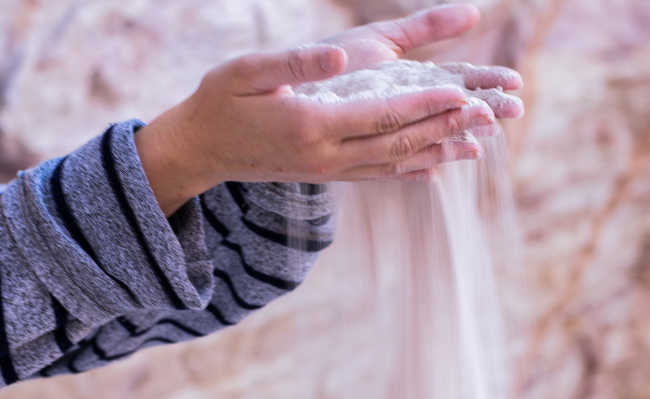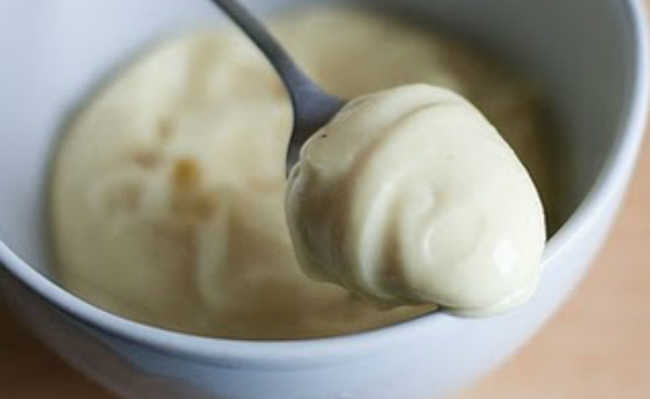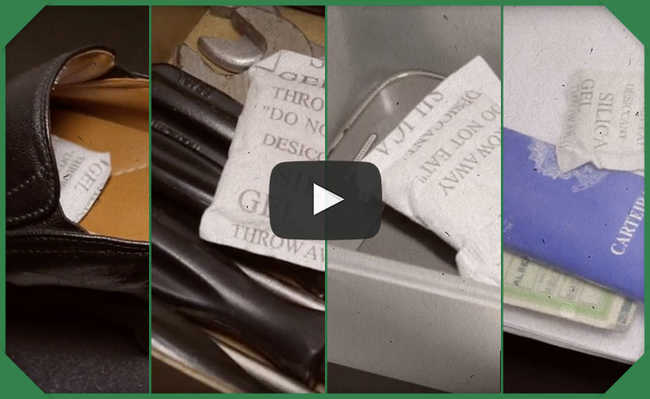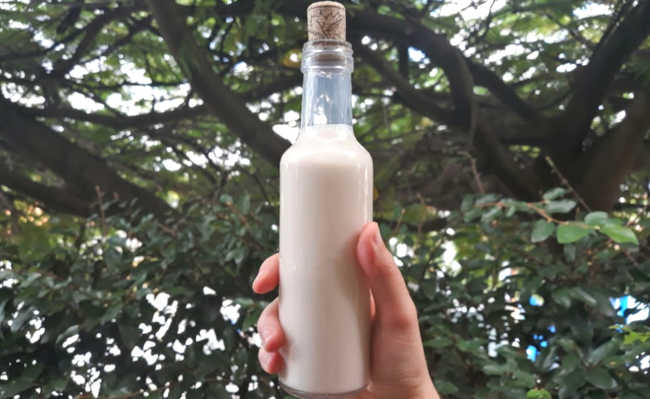Learn how to make natural insecticide and pest control in the garden
Attracting ladybugs, using garlic, onion, pepper and tomato leaves are some of the tips you can put into practice at home to control unwanted insects

Image: monjardimmamaison
Controlling pests and applying natural insecticide are basic steps to get a very beautiful and succulent organic garden! Those who haven't had their garden attacked by pests can also learn prevention methods. Check out the best tips that the eCycle portal separated for you. But if you haven't started your garden yet, see why this is a good practice in the article: "Organic urban agriculture: understand why it's a good idea". And if you already know it's cool to start an organic garden but don't know how, take a look at the article: "Eight Steps to Making Your Organic Garden".
Pest control methods
sheets protect
Many vegetables such as cabbage, cauliflower, broccoli, among others, have large leaves (on the outside) that are often not consumed. You can use these outer leaves of this type of vegetable (without removing them from the foot) to cover and cover the cabbage, the head of the broccoli. cauliflower or other type of vegetable. That way you'll avoid direct contact of your food with insects and, if they come, they'll feed on the unused outer leaves, not the part you want protected.
hands to the garden
If your garden is not large and it is already infested with small insects such as aphids, for example, you can go from leaf to leaf removing these unwanted animals with your own hands using a damp cloth, making sure not keep these insects alive. Some say that in addition to being a form of pest control, this method works as a therapy.
The more mixed the better
For effective pest control, nothing better than forgetting that planting pattern with vegetables all the same and symmetrically separated. Plants also act as a physical barrier to insects. If you want to protect your cabbage plant from green aphids, for example, how about placing it next to peace lily foliage or another type of plant that aphids don't like? The more mixed and interspersed the position of your pots, the more secure your crops are. If you want to intercrop the plantings in the same space of land, just make sure to place root plants with different shapes (so one doesn't suffocate the other) or without toxic effect on the other, to learn more about this research how allelopathy works.
Weeds or not that weeds?
It is important to know how the interaction between different types of plants takes place. Some plants, if grown in the same location, will emit toxic substances and suck water and nutrients from your crop, which ends up damaging its defenses against insects. However, other plants can even function as growth aids by helping to fix nitrogen in the soil or even acting as physical protection (as discussed in the previous topic). Therefore, before removing everything that was spontaneously born without you wanting it, check if it is not beneficial to your plant. Taking this idea into account will certainly help you to control pests in your garden.
Humidity Control
It's not just insects that can become pests for your plants, fungi also have this potential. That's why it's important to check that the crop is not too wet. If you find unexpected stains on the leaves, trunks or stems, check that there are no over-waterings or that the plant is in a place that is too shaded. But be careful, too much sun can also end up killing your little plant. To avoid this kind of thing, do some research on the internet, in books, or talk to people with more experience.
physical barrier
If you don't have other plants to act as a physical barrier or shading, you can use objects to perform this function. The shading screen or the “shade” is an alternative to carry out pest control. They are made of lightweight, permeable material, polypropylene or polyester. They can be supported by wire hoops driven into the ground for a firm protective cover or simply left loose on top of the plants.
attract ladybugs
Ladybugs are faithful friends of farmers, they take care of the plants by eating aphids, white flies and other harmful insects. But she also needs pollen and protection. To attract them, grow plants that have bell-shaped (bell-shaped) flowers as well as tulips and lilies. This type of vegetable works as a store of moisture and freshness for the ladybugs, which build homes in these environments during the summer. Ladybugs also like fennel (Pimpinella anisum L.), coriander (Coriandrum sativum L.), cumin (common cyminum), angelica (Angelica Officinalis), carrot (Daucus carota sativa), Yarrow (Achilea millefollium L ), cosmos (Cosmos bipinnatus), coreopsis (Coreopsislanceolata), fragrant geranium (Pelargonium sp) and dandelion (Taraxacum officinale L). To learn more about dandelions, check out the article "Dandelions: is a plant edible and does it bring health benefits?".
In addition to attracting them with these plants, be careful not to destroy their eggs. They are tiny, yellow, oval and are usually found in groups of ten to 15 eggs, taking up to five days to hatch. Ladybugs usually deposit them where there are already aphid colonies; therefore, if you find them, avoid using insecticide to control pests, even if it is natural.
homemade insecticides
organic manure
Organic slurry, unlike toxic slurry produced in landfills, is a great biofertilizer and, depending on use, can also be a good natural insecticide. Organic slurry is the liquid produced by the decomposition of food through the composting process with earthworms (to learn more about this topic, check out the article: "What is composting and how to make it"; and it can be made at home. diluted in ten parts of water and applied to the leaves (in the period of low sun) and soil, it will provide micronutrients that will aid the growth and defense of the plants. it will have insecticidal potential and can be applied with a spray directly on the parts affected by pests. The insecticidal property of organic slurry can be used both as a means of combating and preventing pests. But remember to apply it only during low sun, otherwise, it may burn the leaves of the crop.
Coconut soap
Coconut soap can also be a pest control ally. But before using it, check if only vegetable oils and caustic soda were used in its composition (which is not harmful to health after it reacts and turns into glycerin and soap). Many soaps include petroleum oils and other harmful substances, avoid them. To learn more about this topic, check out the article: "Soaps, detergents and their impacts on the environment".
To use coconut soap, mix a spoonful of it in a cup of coconut oil, pour this mixture into a spray bottle containing 500 ml of water and apply it directly to unwanted plants or insects. But be careful, don't confuse pests with pollinating insects like bees, which are essential for plant development. Learn more about this topic in the article: "The importance of bees for life on the planet". Also remember that coconut soap is provided by legislation as organic, however it is not a 100% natural product.
Garlic and onion
Garlic and onions can also work as a natural insecticide. To do this, boil five cloves of garlic and half an onion in a liter of water for approximately ten minutes. And, after cooling down, spray the mixture on the affected plants during low sun.
Nettle
Harvest 200 grams of nettle and let it rest in a container with ten liters of water for five days. After this period, strain the mixture and spray the liquid directly on the plants during low sun.
tomato leaf
If you have ever had tomato crops, you know that these plants are very easy to grow and have a very short life cycle; after the first batch of tomatoes, they end up dying naturally. One way to use your leaves before they die is to make a natural insecticide. To do this, fill two cups with chopped tomato leaves and add water. Leave this mixture to rest overnight, add two more glasses of water and spray on the plants in low sun.
chili
Pepper is not harmful to plants and works as a great natural insecticide against pests. To do this, blend five to ten peppers in a blender with two glasses of water and let the mixture rest overnight. Ready! It can now be sprayed on the plants. But be careful with your eyes and wash your hands well after use.
When using these easy techniques to get rid of pests, make sure you are not eliminating plants or bugs that are beneficial to your organic garden.










